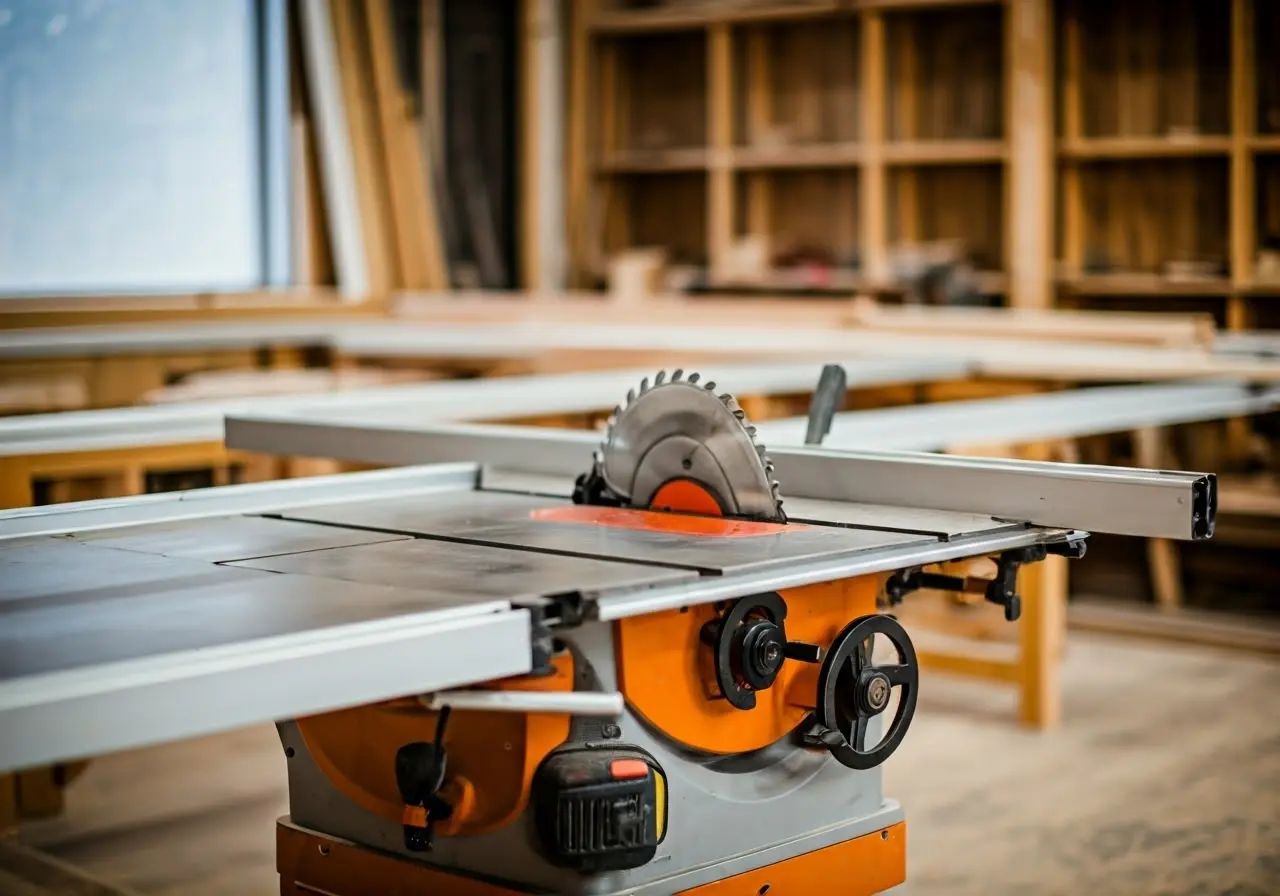Table saws are an essential tool in any carpenter’s workshop. They combine power, precision, and versatility, making them indispensable for various woodworking projects. In this blog, we will explore what makes table saws a carpenter’s best friend and how to make the most of this versatile machine.
What is a Table Saw?
A table saw is a woodworking tool consisting of a circular saw blade mounted on an arbor and driven by an electric motor. This powerful device allows woodworkers to make straight cuts with ease and precision, which is integral to numerous woodworking tasks.
At the heart of a table saw is its simplicity married with functionality. These tools excel in creating precise cuts, which include cross cuts, rip cuts, and even complex angled cuts with the right setup. The design principles behind table saws have remained consistent because they work so effectively, allowing carpenters to build everything from simple shelves to elegant furniture.
One compelling feature of table saws is their adaptability; they can be customized with various blades suited to different materials or desired cuts, making them versatile. Whether you’re cutting hardwood planks or delicate plywood, the table saw’s motor power combined with the right blade ensures a clean, even cut each time.
Key Components of a Table Saw
Understanding the key components of a table saw helps in operating it effectively. Key parts include the blade, table, fence, and miter gauge, each serving an essential role in facilitating precise and varied cuts.
The blade is the centerpiece of the table saw, impacting the quality of each cut. The choice of a saw blade determines the cut’s smoothness and speed. Blades with more teeth produce cleaner cuts in wood, while fewer teeth allow for faster cuts in thicker material or when rough cuts suffice.
Another critical component is the rip fence, which acts as a guide to keep materials aligned while cutting. A good, solid fence can greatly enhance accuracy and safety, preventing the wood from deviating from the cut path. It’s crucial to adjust the fence precisely to maintain the straightness of your cuts.
Equally important is the miter gauge, which helps in making angled cuts. Understanding and using the miter gauge allow users to expand their woodworking capabilities by engaging in more complex projects requiring angled joins.
Different Types of Table Saws
Table saws come in various types, including benchtop, contractor, cabinet, and hybrid models. Each type offers distinct advantages, catering to different needs based on workspace, budget, and project scope.
Benchtop table saws are the epitome of convenience due to their lightweight and portable nature. Ideal for hobbyists and those frequently on the move, these saws are great for small-scale projects. Although they may lack the power of larger models, they make up for it with ease of storage and transport.
For those needing more power without sacrificing too much mobility, contractor table saws present a solid option. These machines offer more robust motors compared to benchtop models and typically have stronger materials supporting longer work hours.
If your projects demand superior precision and durability, cabinet table saws are the top choice. Heavier and more stable due to their metal frame, these saws can tackle any task with high accuracy and are built for longevity. Many professional workshops feature cabinet models as their core table saw.
How to Use a Table Saw Safely
Safety is paramount when using a table saw. Equip yourself with essential protective gear, follow stringent safety practices, and maintain an uncluttered workspace to prevent accidents and ensure a smooth woodworking experience.
One mustn’t overlook the importance of protective gear such as safety goggles and ear protection to shield yourself from wood dust and loud noise. Always make sure that loose clothing and hair are secured to prevent any entanglement with the moving blade.
Routine checks are vital; ensure the table and work area are clean and the equipment is in good working order before operation. Keeping the blade guards and riving knives in place can greatly minimize the risk of accidents related to kickback, where materials unexpectedly lurch back towards the user during a cut.
Familiarize yourself with the stop buttons or power switches to quickly shut down operations in case things don’t go as planned. Practicing these measures can significantly increase your safety while working with this powerful tool.
Tips and Techniques for Optimal Use
Mastering the art of using a table saw involves learning various techniques, such as accurate measuring, steady feeding, and understanding wood grain. Employing these techniques enhances efficiency and outcomes in your woodworking projects.
One effective technique is to use a push stick or push block, especially when cutting narrow pieces. These tools keep your hands safely away from the blade while maintaining firm control of the material being cut, ensuring both safety and precision.
Properly setting the blade height is another crucial aspect. The blade should be set just above the top of the material to reduce resistance and limit tear-out, leading to a more refined edge. This adjustment also reduces the risk of accidents since less exposed blade means fewer chances of contact.
Finally, take time to practice and perfect your techniques with scrap materials. Not only does this build your confidence, but it also allows you to fine-tune setups and learn the specific quirks of your machine. Becoming proficient with these tips can lead to more enjoyable and productive woodworking sessions.
The Indispensable Table Saw: Concluding Thoughts
Table saws truly are a carpenter’s best friend, offering unmatched precision, power, and versatility. By understanding their components, types, and usage tips, you can transform your woodworking projects and achieve outstanding results with safety and efficiency.






Hinterlasse einen Kommentar
Diese Website ist durch hCaptcha geschützt und es gelten die allgemeinen Geschäftsbedingungen und Datenschutzbestimmungen von hCaptcha.